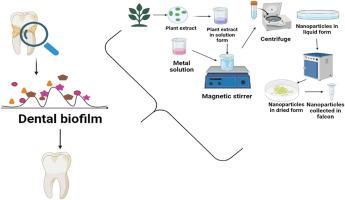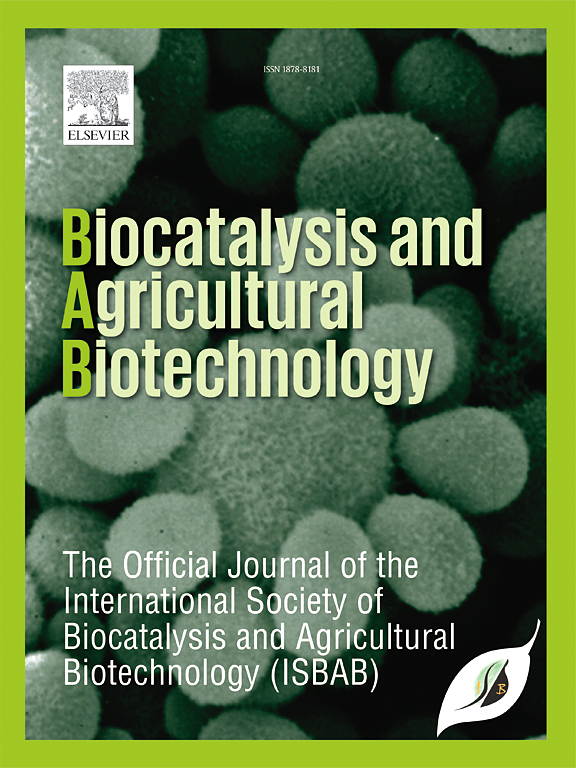对抗牙科生物膜的创新方法:纳米技术及其应用
IF 3.8
Q2 BIOTECHNOLOGY & APPLIED MICROBIOLOGY
引用次数: 0
摘要
牙科生物膜影响着全球约 80% 的人口,是导致牙周炎等严重牙科疾病的一个重要问题,而牙周炎又与类风湿性关节炎等自身免疫性疾病有关。传统的生物膜管理方法,包括机械清除和化学制剂,往往无法彻底根除生物膜,导致口腔感染持续存在。纳米技术为药物输送和生物膜破坏提供了创新的解决方案,为抗菌表面和医疗保健设备的开发带来了新的机遇。本文探讨了基于纳米技术的牙科生物膜(主要由乳酸杆菌、放线菌和变异链球菌形成)防治策略的进展,并研究了牙科生物膜的组成和特征。利用植物成分绿色合成的纳米粒子对生物膜相关病原体具有显著的抗菌活性。此外,论文还研究了各种基于金属氧化物的纳米粒子(如钛、锌和银)在牙科治疗中抑制生物膜形成和增进口腔健康的潜力。文章概述了牙科生物膜形成的各个阶段,强调了未经处理的生物膜的风险,包括对全身健康的影响。本综述强调了纳米药物在预防牙科生物膜和提高牙科治疗效果方面的前景。它深入探讨了最前沿的纳米技术方法,强调了金、银和抗菌肽等纳米粒子的新用途,以及它们破坏生物膜形成和提高牙科治疗效果的独特机制。该综述还涵盖了纳米技术的最新进展,为有针对性的牙科护理策略提供了创新和更有效的解决方案,有可能彻底改变牙科生物膜的管理方法,促进更好的口腔健康效果。本文章由计算机程序翻译,如有差异,请以英文原文为准。

Innovative approaches to combating dental biofilms: Nanotechnology and its applications
Dental biofilms, impacting around 80% of the global population, are a significant issue causing serious dental disorders like periodontitis, which has links to autoimmune diseases such as rheumatoid arthritis. Traditional biofilm management methods, including mechanical removal and chemical agents, often fail to completely eradicate biofilms, allowing oral infections to persist. Nanotechnology offers innovative solutions for medication delivery and biofilm disruption, presenting new opportunities for antimicrobial surfaces and healthcare equipment development. This paper explores advancements in nanotechnology-based strategies to combat dental biofilms, primarily formed by Lactobacillus species, Actinomyces species, and Streptococcus mutans, and examines the composition and characteristics of dental biofilms. The green synthesis of nanoparticles using plant-based ingredients demonstrates significant antibacterial activity against biofilm-associated pathogens. Additionally, the paper investigates the potential of various metal oxide-based nanoparticles, such as titanium, zinc, and silver, in dental treatments to inhibit biofilm formation and enhance oral health. The stages of dental biofilm formation are outlined, highlighting the risks of untreated biofilms, including systemic health implications. This review underscores the promise of nanodrugs in preventing dental biofilms and improving the efficacy of dental procedures. It delves into cutting-edge nanotechnological approaches, emphasizing the novel use of nanoparticles like gold, silver, and antimicrobial peptides, and their unique mechanisms for disrupting biofilm formation and enhancing dental treatments. The review also covers recent advancements in nanotechnology, offering innovative and more effective solutions for targeted dental care strategies, potentially revolutionizing the approach to managing dental biofilms and promoting better oral health outcomes.
求助全文
通过发布文献求助,成功后即可免费获取论文全文。
去求助
来源期刊

Biocatalysis and agricultural biotechnology
Agricultural and Biological Sciences-Agronomy and Crop Science
CiteScore
7.70
自引率
2.50%
发文量
308
审稿时长
48 days
期刊介绍:
Biocatalysis and Agricultural Biotechnology is the official journal of the International Society of Biocatalysis and Agricultural Biotechnology (ISBAB). The journal publishes high quality articles especially in the science and technology of biocatalysis, bioprocesses, agricultural biotechnology, biomedical biotechnology, and, if appropriate, from other related areas of biotechnology. The journal will publish peer-reviewed basic and applied research papers, authoritative reviews, and feature articles. The scope of the journal encompasses the research, industrial, and commercial aspects of biotechnology, including the areas of: biocatalysis; bioprocesses; food and agriculture; genetic engineering; molecular biology; healthcare and pharmaceuticals; biofuels; genomics; nanotechnology; environment and biodiversity; and bioremediation.
 求助内容:
求助内容: 应助结果提醒方式:
应助结果提醒方式:


